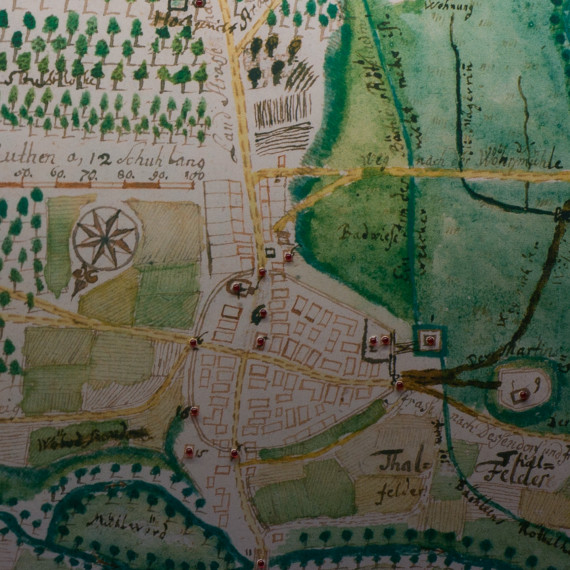Erlangen before 1686

As a result of the Thirty Years' War and the great town fire of 1706, the Old Town's medieval appearance was lost except for a small number of remaining features. The map by Professor J. P. Reinhard (1722–1778) as shown here is the first attempt at reconstructing the former appearance of Erlangen before the New Town was founded in 1686.
Archival sources also provide evidence of Erlangen's small-town character before 1686. According to the Urbar (town register) of 1528, there was a total of 81 residential buildings, of which 46 were located within the town walls, while 12 were situated in the northern, and 23 in the southern suburban precinct. Even if the number of houses marginally increased later on, even before 1500 the town had already reached the size documented in 1706.
Around 500 to 600 inhabitants lived in this town of farming burghers. Its citizens lived on agriculture and trades that almost exclusively produced for local demand. Statistics from 1619 mention 40 craftspeople, including one barber surgeon, cooper, glazier, locksmith, blacksmith, cabinet maker, wheelwright, weaver, and brickmaker; two butchers, millers, and shoemakers; three carpenters; five bakers, tailors, and masons; six clothmakers; as well as several brewers and innkeepers.
Apart from the church, public buildings included the school, the rectory and prebendary's residence, the town hall, the bathhouse, the almshouse and hospital, the mill, and the brick kiln at Essenbach.
< Previous chapter | Next chapter >
